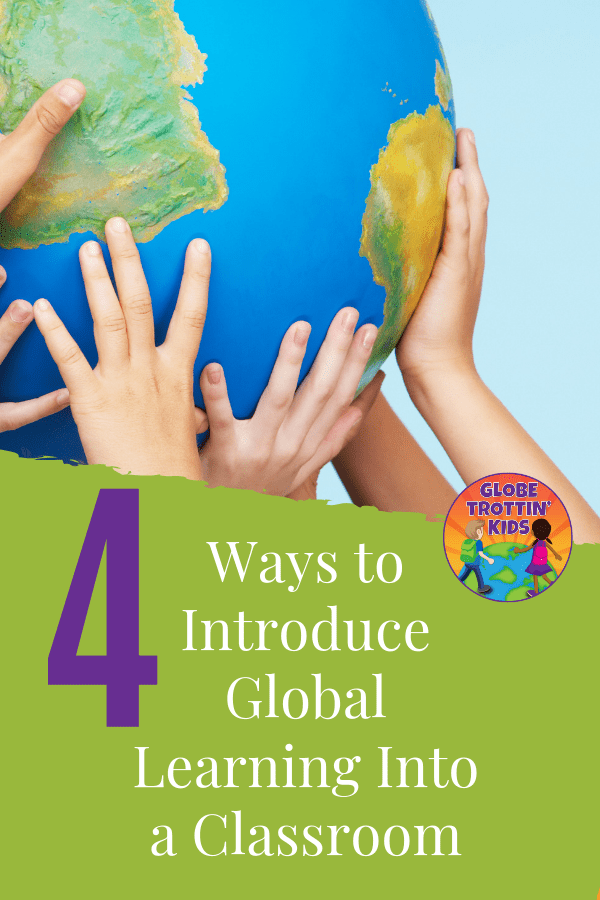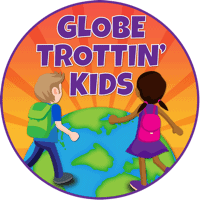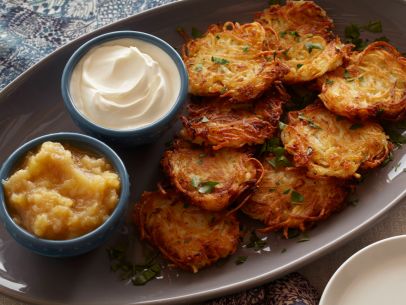4 Ways to Introduce Global Learning Into a Classroom
We’re excited to share a guest post written by Becky Morales from Kid World Citizen as part of our Global Learning in the Elementary Classroom miniseries.
Hello! My Name is Becky Morales, and I am an ESL and Spanish teacher and mom to five kiddos through adoption and birth. Our family is somewhat unique because we have such a mixture of cultures in our house (Mexican, Chinese, Ethiopian, African-American, white). When my kids were little, I looked for simple ways to celebrate our heritages and learn about the world.
To share these ideas with other multicultural families and globally-minded teachers, I founded a website called Kid World Citizen. Now I am happy to share lessons from around the globe to help kids learn about world cultures and geography. Here are my favorite 4 ways to introduce global learning into a classroom.

Disclosure: This post contains affiliate links. By clicking through and making a purchase, we receive a small commission at no extra charge to you. All proceeds help support our free global education website. Thank you!
4 Ways to Introduce Global Learning Into a Classroom
1. Globalize existing lessons.
Global learning can definitely happen during one-time events, like International Week or night, but when we drop pebbles along the way, we dive into deeper learning. Teachers already have their standards that they cover throughout the year and can expand them slightly to include a wider perspective.
Here are some ways to seamlessly integrate global lessons into the existing curriculum.
- Five Senses Learn more about a country by using your five senses.
- Water Cycle Follow the route of snow melting in the mountains to the tributaries of major rivers, such as the Amazon, Yangtze, and Nile, and back to the sea.
- Families/Communities What differences and similarities do you find in families and communities? Look at schools, homes, children (how many, how they are treated, how long they live at home, what jobs they are expected to do around the house), and sports around the world.
- Famous People Include inspiring people from around the world (such as Wangari Maathai, the “Mother of the Trees” from Kenya) when you study biographies.
- Healthy Eating Learn about where in the world our food comes from; investigate healthy multicultural cuisine. Look up slide shows of school lunches or breakfast around the world.
- Animals/Plants Discover native flora, fauna, and habitats around the world; discuss hibernation (related to weather patterns) and migration routes with maps.
Taken from The Global Education Toolkit for Elementary Learners, by Tavangar and Morales (2014)
2. Celebrate a new holiday or tradition.
Celebrations are so fun for kids! Learn about traditions and customs for festivals, celebrations, holidays, and birthdays, and select some favorites to celebrate.
There are countless holidays around the world to choose from, but here are three of my favorites:
- Día de los Muertos (Mexico and a handful of other Latin American countries)
- Diwali (India)
- Chinese New Year (China and many, many other countries in Asia)
Start with some research about the background of the holiday, where, why, and of course, how it’s celebrated. The best way to learn is from someone who celebrates the specific festival, but you can also watch clips on youtube, or read books to learn more.
It is really fun to have special visitors to help celebrate: we have invited a mariachi band to our school, West African drummers, a lion dance troupe for Chinese New Year, and a wonderful Hanukkah storyteller. It is also super fun to make crafts and snacks (who doesn’t love food!?). Be creative and enjoy learning with your students!
3. Read your way around the world.
As parents and teachers, we read to our kids all the time. By carefully choosing the books, we can:
- incorporate multicultural folktales and fiction while also exploring culture in nonfiction books that feature kids’ real lives. Include characters of a wide variety of cultures and backgrounds, so our kids are reflected in the stories and have role models and pride in their heritage.
- join the Global Read Aloud. This worldwide book club uses Twitter, Skype, Edmodo, their wiki, email, regular mail, Kidblog, Tackk, and any other tools you can think of to make connections and discuss the book. There are several books to choose from, and kids in kindergarten through college can participate!
- map the settings of the books you read (picture below!) and make sure you are covering all continents.
- read books that defy stereotypes by showing more than one side of the story. For example, when learning about communities, include books from other countries. Read about kids in urban, suburban, and rural South Africa so that kids realize Africa is not just a vast rural stretch of land with abundant wildlife (which does exist but is not the whole story).
- compare literature and learn about cultural values from Cinderella around the World, Gingerbread Stories around the world, Little Red Riding Hood around the world, or the “Trickster Tales” around the world.

4. Collaborate-Connect-Communicate with classes around the world.
The reality today is that our kids are growing up in an interconnected world community. No matter how rural or homogeneous our local neighborhood may be, we can connect with peers around the world using the internet. Classes can Skype, tweet pictures, share what they’re learning via a blog post, or send emails, letters, or artwork to each other. There are many places to look for pen pals for your class, but the safest and most popular site is ePals.
No matter how we decide to make the connection, this global collaboration is an opportunity for kids to communicate, solve problems, discuss issues, and learn about each other via technology.

Becky Morales is the founder of Kid World Citizen, where she shares fun multicultural and geography activities with teachers and parents. She speaks about global learning in conferences and workshops for schools. Becky is passionate about world cultures, world languages, and world travel. You can find more lessons and activities on her TeachersPayTeachers page. She also loves connecting with like-minded parents and teachers on Facebook, Twitter, and Pinterest.
Thanks to Becky at Kid World Citizen for participating in our mini-series, Global Learning in the Elementary Classroom.
Our goal is to provide educators with quality resources for teaching their students about world geography and cultures. Catch up on other posts in the series:
Globe Trottin’ Kids introduces its new global learning website for students and educators.
Joy Sun Bear tells us about their mission, website, upcoming book series, and educational learning activities.
Little Songbird: Songs for Learning recommends lots of activities, books, and songs for teaching kids about world cultures.
Globe Trottin’ Kids highlights the need for children to learn about the world through their own exploration and play and features a round-up of learning resources.


